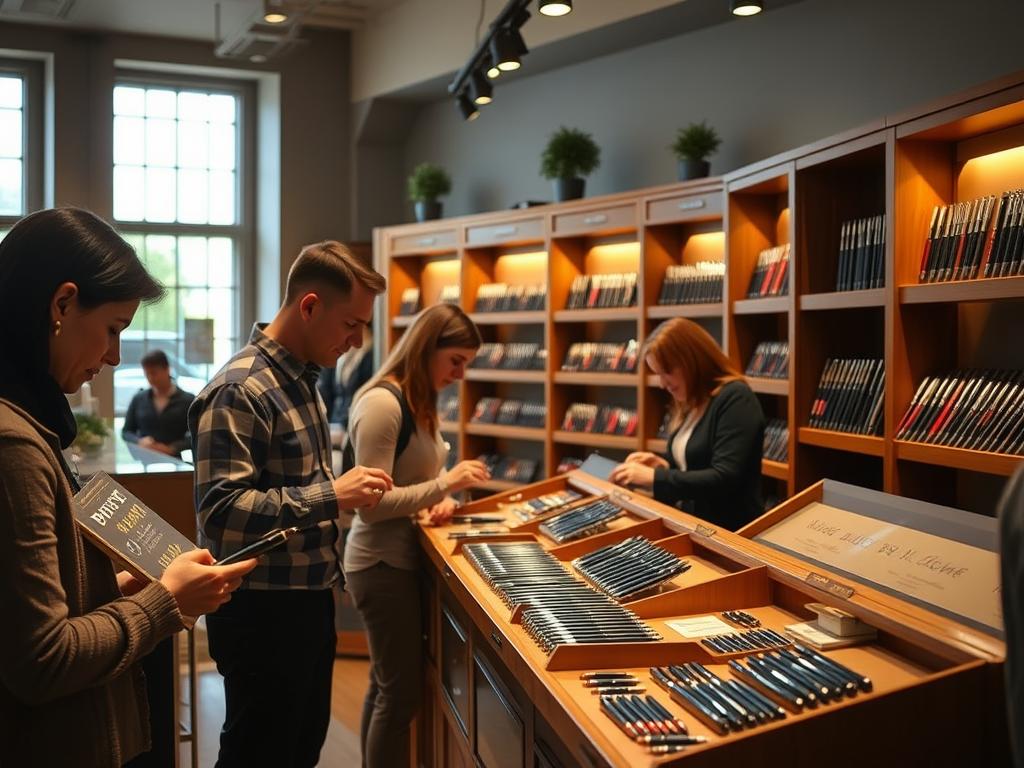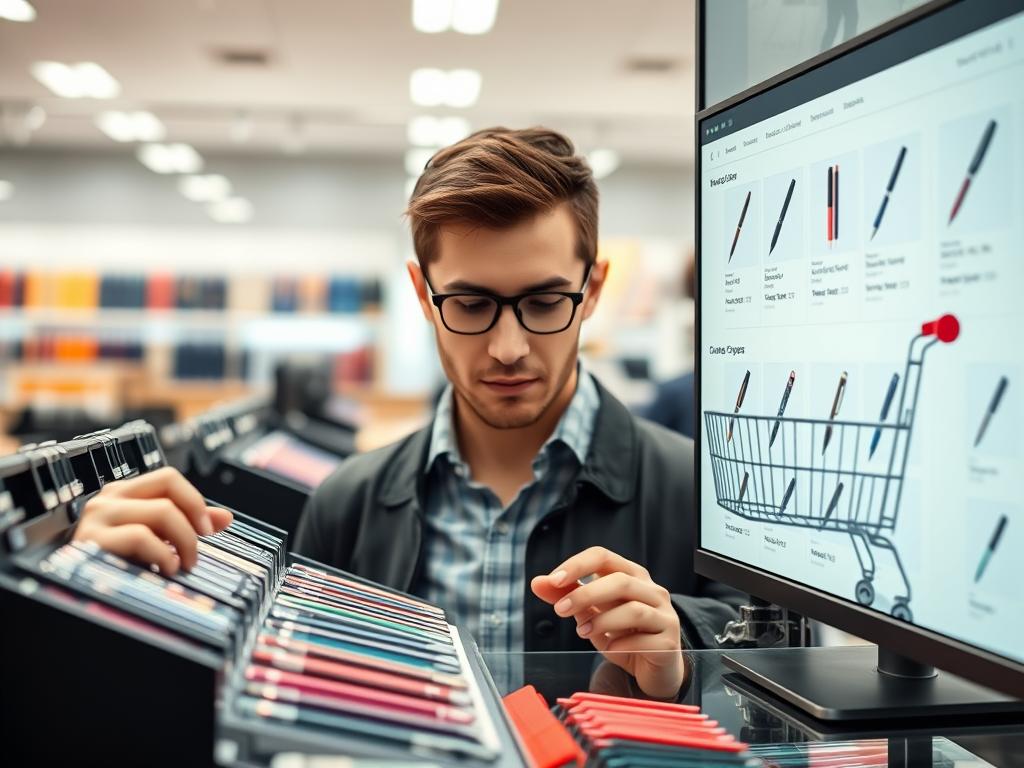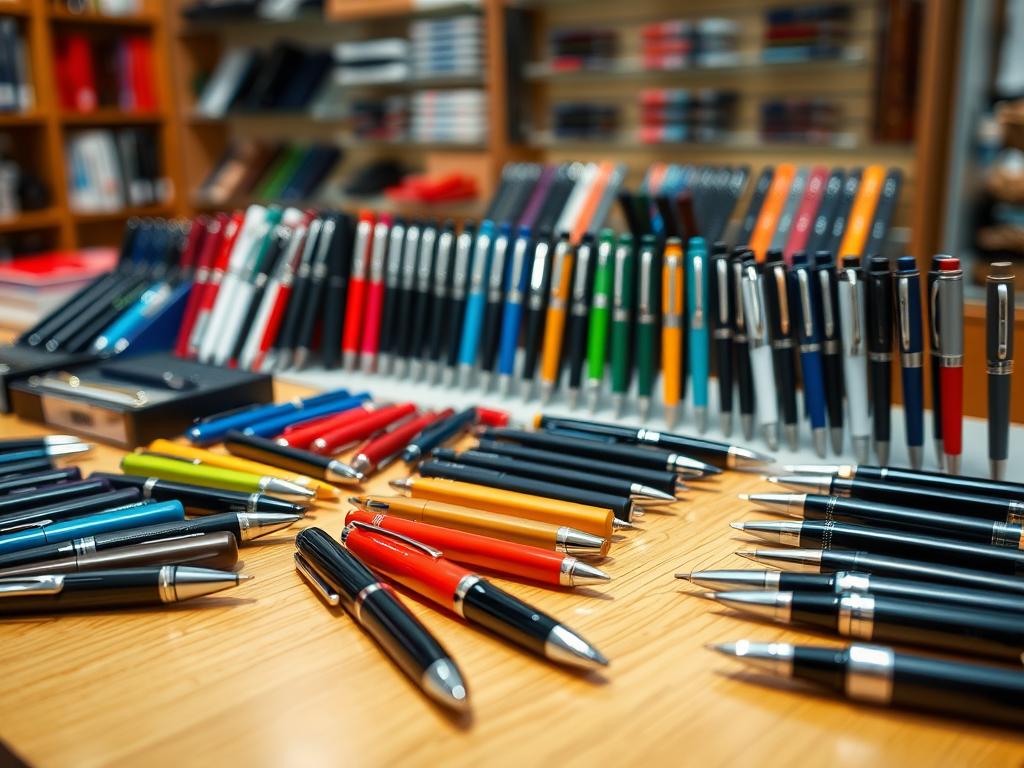In recent years, the way people buy pens has evolved dramatically. Physical retailers like Vanness Pens and The Gentleman Stationer highlight the value of personalized service, where customers can test nibs and compare ink colors in person. Meanwhile, digital platforms offer unmatched convenience for those prioritizing speed and variety.
This shift has sparked lively discussions among enthusiasts. Some argue that hands-on experiences at local shops create lasting connections between buyers and products. Others appreciate the ability to browse rare models from global makers without leaving home.
The industry saw creative adaptations during recent events. When traditional gatherings paused, virtual showcases kept the community engaged. These changes continue to shape how retailers and consumers interact today.
Key Takeaways
- Physical stores provide personalized services like nib testing and ink matching
- Digital retailers excel in accessibility and product variety
- Recent industry shifts influenced buying habits and event formats
- Cost comparisons vary between instant gratification and long-term value
- Both methods play vital roles in sustaining pen culture
Understanding the Pen Shopping Landscape
The stationery market has transformed as buyers seek specialized tools and tailored interactions. Younger generations now prioritize unique designs over mass-produced items, creating new challenges for traditional sellers.
Changing Trends and Consumer Preferences
Urbanization and rising rents forced many specialty shops to close. Between 2015-2022, over 15% of independent retailers shifted to hybrid models. Pop-up stores and limited-edition releases became survival tactics for businesses needing foot traffic.
Hands-on demonstrations at conventions drive 40% of annual sales for luxury brands. Attendees often buy products tested at booths within 48 hours. This immediate connection still outweighs digital browsing for many enthusiasts.
The Role of Local Retailers and Online Platforms
Neighborhood shops thrive by offering repair services and ink mixing unavailable elsewhere. A Chicago store increased revenue 22% after introducing nib customization workshops. These experiences build loyalty that algorithms can’t replicate.
| Factor | Local Retailers | Digital Platforms |
|---|---|---|
| Product Testing | Immediate tactile feedback | Relies on reviews/descriptions |
| Expert Guidance | Tailored recommendations | Automated suggestions |
| Community Impact | Host workshops/events | Global audience reach |
While e-commerce excels in variety, physical spaces foster creativity through shared learning. This balance helps sustain diverse options for different buyer needs.
In-Store Pen Shopping Experience
Walking into a specialty stationery shop engages all five senses immediately. The weight of a well-crafted barrel, the glide of ink on paper, and expert guidance create moments digital browsing can’t replicate. These spaces turn simple purchases into curated journeys.

Personalized Service and Hands-On Testing
Physical locations let buyers test tools like the Leonardo Momento Zero Nuvola before committing. Staff often demonstrate nib flexibility using different paper types or adjust ink flow based on writing pressure. At The Gentleman Stationer, weekend workshops teach visitors how to pair nib sizes with their natural handwriting style.
Shops provide swatch books comparing 200+ ink shades side-by-side. This helps avoid mismatches between screen colors and real-world results. “You can’t feel a pen’s balance through a product description,” notes a frequent buyer from Seattle.
Enhanced Customer Relationships and Community Engagement
Regulars at local retailers often get first access to limited editions or repair clinics. A New York store hosts monthly “ink blending” nights where attendees create custom colors. These events build trust and turn casual shoppers into lifelong patrons.
| Advantage | Impact | Example |
|---|---|---|
| Instant Feedback | Reduces buyer’s remorse | Testing 5 nibs in 10 minutes |
| Skill Development | Improves tool mastery | Calligraphy workshops |
| Local Networking | Strengthens user groups | Pen enthusiast meetups |
Many retailers track regulars’ preferences to suggest new arrivals. This tailored approach turns transactions into collaborative discoveries. Shared learning opportunities keep the culture vibrant and accessible.
online vs store pen shopping: Comparative Insights
Choosing where to purchase writing instruments involves balancing modern efficiency with traditional engagement. Both methods cater to distinct priorities, creating complementary paths for enthusiasts.

Convenience Meets Global Access
Digital platforms excel at instant price checks across multiple sellers. Bulk orders with free shipping often make specialty inks more affordable. During 2020’s event cancellations, virtual showcases like Pelikan Hubs connected collectors worldwide through live demonstrations.
| Aspect | Digital | Physical |
|---|---|---|
| Delivery Speed | 2-5 days | Immediate |
| Rare Finds | Global inventory | Local exclusives |
| Support | Chat bots | Expert staff |
Limited editions pose challenges online. A Sailor Pro Gear Slim release sold out in 8 minutes last March, leaving many fans empty-handed. Third-party markups often follow these quick sell-outs.
When Screens Can’t Replace Shared Experiences
Physical locations thrive through tactile discovery. A Boston retailer reports 68% of visitors buy additional items after testing products. “You can’t replicate the joy of watching someone find their perfect nib weight,” says manager Clara Yates.
Monthly ink-tasting events at Dromgoole’s create lasting connections between enthusiasts. These gatherings often spark collaborations, like a popular journaling group formed after a workshop. While digital methods save time, they miss these organic relationship-building moments.
“Our virtual events kept the community alive, but we saw membership drop 30% without face-to-face interactions.”
Conclusion
Finding the right writing tool involves navigating two distinct worlds. Physical retailers shine through tactile testing and expert guidance—advantages no screen can replicate. Local shops create communities where enthusiasts swap techniques and discover new favorites during workshops or pen shows.
Digital platforms excel at connecting buyers with rare finds and competitive prices. They’re ideal for those prioritizing efficiency or hunting discontinued models. Yet they can’t match the thrill of watching ink flow across paper during an in-person demo.
Your choice depends on what matters most. Do you value immediate interaction with knowledgeable staff? Or prefer browsing global inventories from your couch? Both paths offer unique rewards.
The best approach often blends both methods. Let hands-on experiences inform your digital searches, or use online research to prepare for store visits. However you decide, today’s options ensure every writer finds tools that spark joy.
FAQ
How have consumer preferences shifted in recent years?
Many enthusiasts now prioritize hands-on experiences, like testing nibs or feeling materials, which local retailers often provide. Others value the convenience of browsing detailed specs and reviews digitally. Brands like Pilot and Lamy cater to both by offering exclusive models in-store alongside online exclusives.
What advantages do brick-and-mortar stores offer over digital platforms?
Physical shops allow customers to try pens firsthand, ask experts about ink flow or nib customization, and build relationships with staff. Retailers like Yoseka Stationery host events to foster community, creating spaces where shoppers can share techniques or discover new brands together.
Are there drawbacks to purchasing writing instruments through websites?
While platforms provide access to global brands, shoppers can’t physically test products before buying. Misunderstandings about nib sizes or material quality sometimes lead to returns. Retailers like Goulet Pens mitigate this with video demos, but tactile feedback remains limited compared to in-person interactions.
How do price points differ between retail and e-commerce options?
Online sellers often have lower overhead costs, enabling competitive pricing on mainstream models. However, limited-edition releases or specialty nibs might only appear at authorized dealers or pen shows. Retailers like Dromgoole’s occasionally match web prices during promotions to retain loyal clients.
Can customers access niche brands through both channels?
Yes. Smaller brands like Franklin-Christoph sell directly online while partnering with shops for local exposure. Conversely, retailers such as Atlas Stationers curate mixes of established and emerging labels, giving shoppers unique finds they might miss when browsing algorithm-driven web catalogs.
Do in-person events still matter in a digital-first market?
Absolutely. Pen shows, like the DC Supershow, draw thousands yearly. Attendees test rare models, commission nib grinds, and network with makers. These events complement—rather than compete with—online communities, blending tactile exploration with shared passion for craftsmanship.


